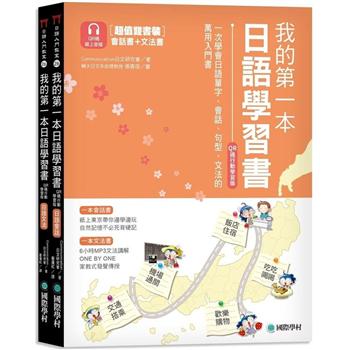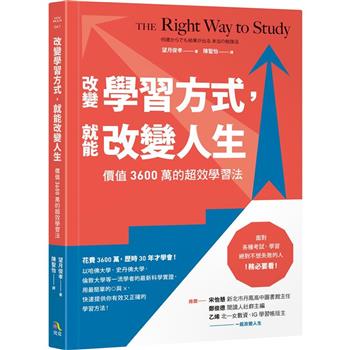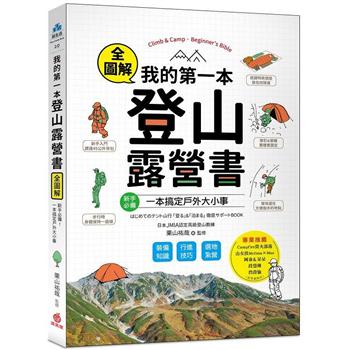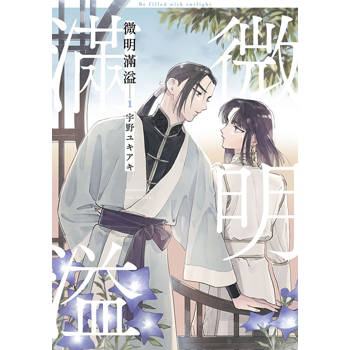這一專輯所選的作品主要凸顯台灣文學在全球動物文學研究的舞台上的地方認同。台灣的自然書寫涉及地理環境所具有的地方意義,以及與台灣獨特的文化歷史的記憶。尤其是吳明益的兩篇小說,〈國姓爺〉以及和台灣美濃地方有關的〈往靈魂的方向〉都是很好的例子。李喬的〈修羅祭〉,未能收入本叢刊第36集「李喬專輯」(2015年7月),卻收入「台灣文學的動物書寫」這一專輯,更能顯示動物抒寫對生命的哲學思考。本期也收錄了杜國清教授所創作與動物主題有關之三首詩:內容涉及台灣對待動物的生態環境和動物保護意識的〈阿河,阿河〉、表現人與狗之間親近關係的〈我的憂傷〉,以及描寫「人狗神」生命流浪、輪迴不已的〈三界輪迴〉,而與李喬的〈修羅祭〉佛教超越現世的生命哲學觀互相呼應。
In the thirty years since the 1980s, a significant volume of creative work and research in Taiwan has been produced under the general category of nature writing. There have been conferences and proceedings, M.A. theses and Ph.D. dissertations, research articles, books, and anthologies. There are four representative and well-recognized writers in the field: Liu Ka-shiang, who has dedicated himself to birdwatching and nature writing; Liao Hung-chi, who is known for his writings on whale and ocean experiences; Wu Ming-yi, who has concentrated on butterflies and broken new ground in ecological writing; as well as Syaman Rapongan, who has devoted himself to reconstructing the ocean-centric culture of the indigenous Taos people. It is in view of all the above that this issue of the journal has been dedicated to “Animal Writing in Taiwan Literature.” Recalling that our publication has a mission to “introduce the voices of Taiwan literature from recent publications to English readers, and especially to introduce the views of Taiwanese writers and scholars regarding their own literature,” we have asked Professor Chia-ju Chang of Brooklyn College to be guest editor of this special issue.
The works selected for translation here were recommended primarily by Professor Chang. She has chosen works that highlight the local characteristics of animal literature in Taiwan as distinct from international animal literature. These works refer to the geographical environment and to memory of the unique cultural history of Taiwan. The two stories by Wu Ming-yi, “Koxinga” and“The Compass of the Soul,” are excellent examples of this. Lee Chiao's“A Sacrifice to the Asuras” was originally intended for the special issue on the author (No. 36, July 2015), but it turned out to be very appropriate for this issue on animal writing in Taiwan as it ponders animal life from a philosophical perspective. Furthermore, three poems related to animal writing by Prof. Tu are collected in this issue. “A-he, A-he,” about a hippo, concerns attitudes toward animals as well as environmental consciousness and animal protection in Taiwan. “My Grief ” expresses the close relationship between a man and his dog. And the third poem, “Reincarnation of the Three Realms—After watching the movie God Man Dog,” considers the Buddhist concept of incarnation in the three realms of life, echoing Lee Chiao's Buddhist philosophy on life beyond this life.
| FindBook |
|
有 1 項符合
台灣文學英譯叢刊(No. 41):台灣文學的動物書寫專輯的圖書 |
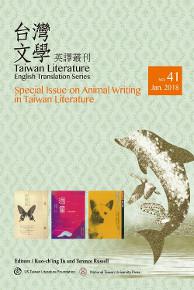 |
$ 356 ~ 405 | 台灣文學英譯叢刊(No. 41):台灣文學的動物書寫專輯
作者:Kuo-ch'ing Tu(杜國清)、Terence Russell(羅德仁) 出版社:國立臺大出版中心 出版日期:2017-12-08 語言:繁體/中文  共 6 筆 → 查價格、看圖書介紹 共 6 筆 → 查價格、看圖書介紹
|
|
|
文學
 文學,在最廣泛的意義上,是任何單一的書面作品。更嚴格地說,文學寫作是一種藝術形式,或被認為具有藝術或智力價值的任何單一作品,通常是由於以不同於普通用途的方式部署語言。
文學,在最廣泛的意義上,是任何單一的書面作品。更嚴格地說,文學寫作是一種藝術形式,或被認為具有藝術或智力價值的任何單一作品,通常是由於以不同於普通用途的方式部署語言。 它的拉丁詞根literatura/litteratura被用來指代所有的書面記錄,儘管當代定義將術語擴展到包括口頭或唱歌的文本。文學可以根據是虛構作品還是非虛構作品進行分類,也可以根據是韻文還是散文進行分類;可以根據長篇小說、中篇小說、短篇小說等主要形式進一步區分;作品往往根據歷史時期或者遵守某些美學特徵或期望進行分類。
以語言文字為工具形象化地反映現實的藝術,包括韻文、散文、劇本、小說等,是文化的重要表現形式,以不同的流派表現內心情感和再現一定時期和一定地域的生活。
這個概念隨著時間的推移而改變了意義:現在它可以擴大到非書面的口頭藝術形式,可以與語言或文字本身配合,因此很難就其起源達成一致。
印刷技術的發展使得書面作品的分布和擴散成為可能,最終導致了網絡文學。
文學並不一定是客觀的,一名成功的文學家能在自己的文學作品中,展現自己對於文學的主觀看法,抒發自己的情緒和感觸,但藉由嘗試建立一個「客觀的標準」,有時對能幫助作家了解「讀者的感受」以求將內心之情感與藝術表現完整的體現在讀者心中。
有時也能藉作家主觀想法帶給社會不同面相去省思現況,例如女性文學的興起。
![]() 維基百科
維基百科
圖書介紹 - 資料來源:博客來 評分:
圖書名稱:台灣文學英譯叢刊(No. 41):台灣文學的動物書寫專輯
內容簡介
作者介紹
【About the Translators】
Kuo-ch'ing Tu, born in Taichung, Taiwan. His research interests include Chinese literature, Chinese poetics and literary theories, comparative literature East and West, and world literatures of Chinese (Shi-Hua wenxue). He is the author of numerous books of poetry in Chinese, as well as translator of English, Japanese, and French works into Chinese.
Terence Russell is an Associate Professor in the Asian Studies Center at the University of Manitoba in Winnipeg, Manitoba. His early research dealt with classical Chinese literature and religion but for the past few years his interest has turned to contemporary literature in Chinese, especially the literature of Taiwan's indigenous people. Dr. Russell has a strong interest in translation and translation theory.
Chia-ju Chang is an associate professor of Chinese at Brooklyn College, the City University of New York, and teaches translation at the Middlebury Institute of International Studies. Recent translations include Stone Cell by Lo Fu (Zephyr) and Trees without Wind by Li Rui (Columbia University Press). Her research broadly falls under what is now called “environmental humanities” with a strong commitment to Chinese critical animal studies, ecocriticism, and ecocinema studies. Her first book in Chinese, Global Imagination of Ecological Communities: Chinese and Western Ecocritical Praxis (Jiangsu University Press, 2013), won the 2013 Bureau of Jiangsu Province Journalism and Publication award in China. Her many articles (in both English and Chinese) have been published in the U.S., China, and Taiwan. She and Scott Slovic coedited a volume Ecocriticism in Taiwan: Identity, Environment, and the Arts (Lexington, 2016). She has served on the executive council of the Association for the Study of Literature and Environment (ASLE). She was the Kiriyama Professor for Asia Pacific Studies in the Asia Pacific Center at the University of San Francisco for Spring 2016
【About the Translators】
John Balcom teaches at the Middlebury Institute of International Studies. Recent translations include Abyss by Ya Hsien (Zephyr), which was a finalist for the 2017 PEN poetry in translation award, and, with Yingtsih Balcom, Memories of Mount Qilai: The Education of a Young Poet by Yang Mu (Columbia University Press). His article“Zwei häufig vorkommende Dudleyas an der Küste von Monterey County” recently appeared in Avonia.
Chia-ju Chang is an associate professor of Chinese at Brooklyn College, the City University of New York, and teaches translation at the Middlebury Institute of International Studies. Recent translations include Stone Cell by Lo Fu (Zephyr) and Trees without Wind by Li Rui (Columbia University Press). Her research broadly falls under what is now called “environmental humanities” with a strong commitment to Chinese critical animal studies, ecocriticism, and ecocinema studies. Her first book in Chinese, Global Imagination of Ecological Communities: Chinese and Western Ecocritical Praxis (Jiangsu University Press, 2013), won the 2013 Bureau of Jiangsu Province Journalism and Publication award in China. Her many articles (in both English and Chinese) have been published in the U.S., China, and Taiwan. She and Scott Slovic coedited a volume Ecocriticism in Taiwan: Identity, Environment, and the Arts (Lexington, 2016). She has served on the executive council of the Association for the Study of Literature and Environment (ASLE). She was the Kiriyama Professor for Asia Pacific Studies in the Asia Pacific Center at the University of San Francisco for Spring 2016.
Andrea Lingenfelter is the translator of The Kite Family by Hon Lai Chu, The Changing Room: Selected Poetry of Zhai Yongming, Farewell My Concubine by Lillian Lee (Li Pik-wah), “The Sanctimonious Cobbler” by Wang Anyi, and many poems and short stories from around the Chinese-speaking world. She is a past recipient of a NEA Translation Grant and a PEN translation grant, and she will be taking up a Luce Translation Fellowship at the Vermont Studio Center in Fall 2017 and Summer 2018. An affiliate of the Mills College M.F.A. in Literary Translation, she has also taught at UC Davis and currently teaches at the University of San Francisco.
Steven Mai was born in New York, raised in Guangzhou, China, and returned stateside during his formative years. He received an M.S. in Translation from NYU SPS, where he graduated in 2015. He is one of the founding partners of Chinese Languages Management Group, a New York based translation and interpretation company.
Darryl Sterk is a Chinese-English literary translator and assistant professor of translation at Lingnan University. As a scholar of translation he's studying the translation of the screenplay of Seediq Bale in the context of Indigenous Translation Studies.
Kevin Tsai works on East-West comparative studies, with particular interest in Chinese, Greek, and Roman literatures. As a translator, he focuses on traditional Chinese poetry and Taiwanese literature. Currently an assistant professor at the University of South Alabama, he is completing a monograph on the Ming Dynasty play Shagouji and a translation of the Song Dynasty poet Li Qingzhao.
Hengsyung Jeng is Professor Emeritus at National Taiwan University. He was born in Taipei, Taiwan, in 1941. He graduated from the Department of Foreign Languages and Literatures, National Taiwan University, in 1963, and received his M.A. in TESOL in 1968 and Ph.D. in linguistics in 1976 from the University of Hawaii. Afterwards, he also did research on linguistics and literature at Stanford University (1982) and Harvard University (2000) as a visiting scholar. He specializes in linguistics, English teaching and testing, contrastive analysis of Chinese and English, linguistic approach to literature, Bunun (an Austronesian language of Taiwan), and taught these courses at NTU and some other universities for more than 40 years from 1968 to 2011. In 2010, he was given the NTU Award for Outstanding Social Services because of his services in the three areas of English teaching, English testing, and preservation of Bunun, and in 2011, he was granted the title of Professor Emeritus because of his distinguished research contributions in the four areas of English teaching, English testing, Bunun studies, and linguistic analysis of literary works.
Kuo-ch'ing Tu, born in Taichung, Taiwan. His research interests include Chinese literature, Chinese poetics and literary theories, comparative literature East and West, and world literatures of Chinese (Shi-Hua wenxue). He is the author of numerous books of poetry in Chinese, as well as translator of English, Japanese, and French works into Chinese.
Terence Russell is an Associate Professor in the Asian Studies Center at the University of Manitoba in Winnipeg, Manitoba. His early research dealt with classical Chinese literature and religion but for the past few years his interest has turned to contemporary literature in Chinese, especially the literature of Taiwan's indigenous people. Dr. Russell has a strong interest in translation and translation theory.
Chia-ju Chang is an associate professor of Chinese at Brooklyn College, the City University of New York, and teaches translation at the Middlebury Institute of International Studies. Recent translations include Stone Cell by Lo Fu (Zephyr) and Trees without Wind by Li Rui (Columbia University Press). Her research broadly falls under what is now called “environmental humanities” with a strong commitment to Chinese critical animal studies, ecocriticism, and ecocinema studies. Her first book in Chinese, Global Imagination of Ecological Communities: Chinese and Western Ecocritical Praxis (Jiangsu University Press, 2013), won the 2013 Bureau of Jiangsu Province Journalism and Publication award in China. Her many articles (in both English and Chinese) have been published in the U.S., China, and Taiwan. She and Scott Slovic coedited a volume Ecocriticism in Taiwan: Identity, Environment, and the Arts (Lexington, 2016). She has served on the executive council of the Association for the Study of Literature and Environment (ASLE). She was the Kiriyama Professor for Asia Pacific Studies in the Asia Pacific Center at the University of San Francisco for Spring 2016
【About the Translators】
John Balcom teaches at the Middlebury Institute of International Studies. Recent translations include Abyss by Ya Hsien (Zephyr), which was a finalist for the 2017 PEN poetry in translation award, and, with Yingtsih Balcom, Memories of Mount Qilai: The Education of a Young Poet by Yang Mu (Columbia University Press). His article“Zwei häufig vorkommende Dudleyas an der Küste von Monterey County” recently appeared in Avonia.
Chia-ju Chang is an associate professor of Chinese at Brooklyn College, the City University of New York, and teaches translation at the Middlebury Institute of International Studies. Recent translations include Stone Cell by Lo Fu (Zephyr) and Trees without Wind by Li Rui (Columbia University Press). Her research broadly falls under what is now called “environmental humanities” with a strong commitment to Chinese critical animal studies, ecocriticism, and ecocinema studies. Her first book in Chinese, Global Imagination of Ecological Communities: Chinese and Western Ecocritical Praxis (Jiangsu University Press, 2013), won the 2013 Bureau of Jiangsu Province Journalism and Publication award in China. Her many articles (in both English and Chinese) have been published in the U.S., China, and Taiwan. She and Scott Slovic coedited a volume Ecocriticism in Taiwan: Identity, Environment, and the Arts (Lexington, 2016). She has served on the executive council of the Association for the Study of Literature and Environment (ASLE). She was the Kiriyama Professor for Asia Pacific Studies in the Asia Pacific Center at the University of San Francisco for Spring 2016.
Andrea Lingenfelter is the translator of The Kite Family by Hon Lai Chu, The Changing Room: Selected Poetry of Zhai Yongming, Farewell My Concubine by Lillian Lee (Li Pik-wah), “The Sanctimonious Cobbler” by Wang Anyi, and many poems and short stories from around the Chinese-speaking world. She is a past recipient of a NEA Translation Grant and a PEN translation grant, and she will be taking up a Luce Translation Fellowship at the Vermont Studio Center in Fall 2017 and Summer 2018. An affiliate of the Mills College M.F.A. in Literary Translation, she has also taught at UC Davis and currently teaches at the University of San Francisco.
Steven Mai was born in New York, raised in Guangzhou, China, and returned stateside during his formative years. He received an M.S. in Translation from NYU SPS, where he graduated in 2015. He is one of the founding partners of Chinese Languages Management Group, a New York based translation and interpretation company.
Darryl Sterk is a Chinese-English literary translator and assistant professor of translation at Lingnan University. As a scholar of translation he's studying the translation of the screenplay of Seediq Bale in the context of Indigenous Translation Studies.
Kevin Tsai works on East-West comparative studies, with particular interest in Chinese, Greek, and Roman literatures. As a translator, he focuses on traditional Chinese poetry and Taiwanese literature. Currently an assistant professor at the University of South Alabama, he is completing a monograph on the Ming Dynasty play Shagouji and a translation of the Song Dynasty poet Li Qingzhao.
Hengsyung Jeng is Professor Emeritus at National Taiwan University. He was born in Taipei, Taiwan, in 1941. He graduated from the Department of Foreign Languages and Literatures, National Taiwan University, in 1963, and received his M.A. in TESOL in 1968 and Ph.D. in linguistics in 1976 from the University of Hawaii. Afterwards, he also did research on linguistics and literature at Stanford University (1982) and Harvard University (2000) as a visiting scholar. He specializes in linguistics, English teaching and testing, contrastive analysis of Chinese and English, linguistic approach to literature, Bunun (an Austronesian language of Taiwan), and taught these courses at NTU and some other universities for more than 40 years from 1968 to 2011. In 2010, he was given the NTU Award for Outstanding Social Services because of his services in the three areas of English teaching, English testing, and preservation of Bunun, and in 2011, he was granted the title of Professor Emeritus because of his distinguished research contributions in the four areas of English teaching, English testing, Bunun studies, and linguistic analysis of literary works.
目錄
Foreword to the Special Issue on Animal Writing in Taiwan Literature/Kuo-ch'ing Tu
「台灣文學的動物書寫專輯」卷頭語/杜國清
Introduction "Animal Writing: Taiwan's Dongwu shuxie"/Chia-ju Chang
導言〈抒寫動物:台灣動物書寫〉/張嘉如
Works by Liu Ka-shiang
Hill of Stray Dogs (Excerpt) 《野狗之丘》(節譯)/Translated by Chia-ju Chang & Steven Mai
The Windbird Pinocha (Excerpt) 《風鳥皮諾查》(節譯)/Translated by Darryl Sterk
Humpback Whale Halinmama (Excerpt)《座頭鯨赫連麼麼》(節譯)/Translated by Andrea Lingenfelter
Flying Away from Bird Island 飛離鳥島/Translated by John Balcom
Works by Liao Hung-chi
Fish Blood 魚血/Translated by Steven Mai
Squid Beach 魷魚灘/Translated by Andrea Lingenfelter
Coming Ashore 上岸/Translated by Andrea Lingenfelter
Periwinkle 錦葵/Translated by Andrea Lingenfelter
Merbabies 海童/Translated by Andrea Lingenfelter
Works by Wu Ming-yi
Koxinga 國姓爺/Translated by Darryl Sterk
The Compass of the Soul 往靈魂的方向/Translated by Darryl Sterk
A Work by Lee Chiao
A Sacrifice to the Asuras 修羅祭/Translated by Kevin Tsai
Animal Poems by Kuo-ch'ing Tu
A-he, A-he 阿河,阿河/Translated by Kuo-ch'ing Tu
My Grief–In Memory of Argus 我的憂傷—悼阿佳斯/Translated by Kuo-ch'ing Tu
Reincarnation of the Three Realms–After Watching the Movie God Man Dog 三界輪迴—《流浪神狗人》觀後/Translated by Kuo-ch'ing Tu
Bunun Animal Stories by Hengsyung Jeng
Ten Bunun Animal Stories 布農動物故事十則/Translated by Hengsyung Jeng
About the Translators
About the Editors
Subscription Form
「台灣文學的動物書寫專輯」卷頭語/杜國清
Introduction "Animal Writing: Taiwan's Dongwu shuxie"/Chia-ju Chang
導言〈抒寫動物:台灣動物書寫〉/張嘉如
Works by Liu Ka-shiang
Hill of Stray Dogs (Excerpt) 《野狗之丘》(節譯)/Translated by Chia-ju Chang & Steven Mai
The Windbird Pinocha (Excerpt) 《風鳥皮諾查》(節譯)/Translated by Darryl Sterk
Humpback Whale Halinmama (Excerpt)《座頭鯨赫連麼麼》(節譯)/Translated by Andrea Lingenfelter
Flying Away from Bird Island 飛離鳥島/Translated by John Balcom
Works by Liao Hung-chi
Fish Blood 魚血/Translated by Steven Mai
Squid Beach 魷魚灘/Translated by Andrea Lingenfelter
Coming Ashore 上岸/Translated by Andrea Lingenfelter
Periwinkle 錦葵/Translated by Andrea Lingenfelter
Merbabies 海童/Translated by Andrea Lingenfelter
Works by Wu Ming-yi
Koxinga 國姓爺/Translated by Darryl Sterk
The Compass of the Soul 往靈魂的方向/Translated by Darryl Sterk
A Work by Lee Chiao
A Sacrifice to the Asuras 修羅祭/Translated by Kevin Tsai
Animal Poems by Kuo-ch'ing Tu
A-he, A-he 阿河,阿河/Translated by Kuo-ch'ing Tu
My Grief–In Memory of Argus 我的憂傷—悼阿佳斯/Translated by Kuo-ch'ing Tu
Reincarnation of the Three Realms–After Watching the Movie God Man Dog 三界輪迴—《流浪神狗人》觀後/Translated by Kuo-ch'ing Tu
Bunun Animal Stories by Hengsyung Jeng
Ten Bunun Animal Stories 布農動物故事十則/Translated by Hengsyung Jeng
About the Translators
About the Editors
Subscription Form
序
「台灣文學的動物書寫專輯」卷頭語
杜國清
本叢刊自1996年創刊開始向英語讀者介紹台灣文學以來,關於台灣文學與自然、環境、海洋、山林等,我們過去曾出版過幾個專輯,包括「台灣文學與自然.環境」(第8集)、「台灣文學與海洋」(第17集)、「台灣文學與山林」(第18集),其中涉及不少有關自然和動物的書寫,包括原住民作家和海洋作家廖鴻基的作品。尤其是,在第8集中,我們譯介了廖鴻基的〈三月三樣三〉,夏曼.藍波安(Syama Rapongan)的〈浪人鰺〉(The Wanderer Shen-fish),黃春明的〈放生〉(Set Free),以及其他與動物和自然環境有關的散文。
台灣在1987年解除實施三十八年之久(1949-1987)的戒嚴令之後,成為自由、開放、充滿活力的社會,各種西方現代思潮蜂擁而來,對文學創作和文化研究各個領域造成極大的衝擊,而自然寫作的風潮也應運而生。
一般而言,雖然「自然書寫」的概念,引自美國研究的一個文學類型,表現出對自然世界的關注,以及人類對自然界經驗的反應和反思。進而在1980年代初,進展為「生態批評」,一門探索文學與自然環境之間的關係的學問,以及對自然和荒野的保護運動。「自然書寫」和「生態批評」的概念,透過翻譯,也在1980 年代引進台灣文學的創作視野和研究領域。經過翻譯,自然書寫在臺灣生根,並演化成富有內涵、技巧精湛的寫作領域。隨著書寫對象的不同,以及對地理環境和歷史文化的關注,而發展成文學的各種次類型,例如海洋文學、鯨豚文學、溪流文學、濕地文學等。自然寫作,也有人稱之為「生態文學」或「環保文學」。
1980年代以來,經過三十多年的經營,「自然寫作」在台灣已展現出為數相當可觀的創作和研究成果,包括學術研討會和論文集、碩士和博士的學位論文、研究論文和專著和選集。在「自然寫作」這一文類中,表現最突出的代表作家,一般公認的有四位:致力於鳥類觀察自然寫作的劉克襄,以鯨豚文學和海洋經驗著稱的廖鴻基,以蝴蝶為觀察對象、開創出生態書寫新路的吳明益,以及建構達悟族與海洋文化的夏曼.藍波安。
有鑒於此,本叢刊特地再出「台灣文學的動物書寫」專輯,再次強調我們的出版宗旨,在於向英語讀者介紹「台灣文學的聲音」,亦即「台灣本地的作家和研究者對台灣文學本身的看法」。我們特地請在美國布魯克林大學任教多年的張嘉如教授籌劃這一專輯,並擔任執行編輯。張教授在她的導言〈抒寫動物:台灣的動物書寫〉中指出:「動物書寫」是受到自然書寫文學類型所啟發而發展出來的詞彙。自然書寫(ziran shuxie)和動物書寫(dongwu shuxie)的領域時常重疊,這兩者之間存在的差異很難截然劃分。根據她的了解,在西方,並沒有與動物書寫一詞相對應的字眼,雖有動物文學、動物小說等詞。因此,她認為,在台灣發展出來的「動物書寫」的概念,是台灣對西方動物文學研究的貢獻。她引述吳明益認為中文的「動物書寫」具有雙重含義,加以進一步的解釋。
作為自然書寫者和生態批評研究者,吳明益建議使用「自然書寫」取代「自然寫作」,因為「書寫」(writing/recording)一詞與「抒寫」(lyrical writing/sentiment) 為同音異義詞,可以同時作為名詞和動詞,可以含有雙重意涵,同時指涉客觀知識的「書寫/記述」和主觀感受的「抒寫/流露」,而豐富了「自然書寫」這一文類的概念,使之具有更深的意涵。這也是「自然書寫」這一文類,在台灣發展出來的特殊意義,以及對這一學術領域的貢獻。
進而,張教授在導言中,主張使用中文「動物書寫」一詞的拼音(而非把它翻譯成animal writing),以凸顯在全球動物文學研究的舞台上,該詞所蘊含的地方認同,以及具有地方色彩的自然書寫的獨特性。這一用意也符合本叢刊的出版宗旨。我們出版「台灣文學的動物書寫」這一具有特色的專輯,也是對英語讀者和國際學術界做出了一個貢獻。
這一專輯所選的作品,原則上是根據張教授的選擇。這些作品凸顯台灣文學在全球動物文學研究的舞台上的地方認同。台灣的自然書寫涉及地理環境所具有的地方意義,以及與台灣獨特的文化歷史的記憶。尤其是吳明益的兩篇小說,〈國姓爺〉以及和台灣美濃地方有關的〈往靈魂的方向〉都是很好的例子。李喬的〈修羅祭〉,未能收入本叢刊第36集「李喬專輯」(2015年7月),結果因緣際會,卻收入「台灣文學的動物書寫」這一專輯,更能顯示動物抒寫對生命的哲學思考。
在與張教授籌劃這一專輯的過程中,受到她的導言的啟發,我選了我自己的作品,與動物有關的三首詩,內容涉及台灣對待動物的生態環境和動物保護意識的〈阿河,阿河〉、表現人與狗之間親近關係的〈我的憂傷〉,以及描寫「人狗神」生命流浪、輪迴不已的〈三界輪迴〉,而與李喬的〈修羅祭〉佛教超越現世的生命哲學觀互相呼應。
這一專輯的構想、籌劃和翻譯者的聯繫,都由張嘉如教授執行,她的功勞和貢獻,以及翻譯者的努力和辛勞,在此謹致最大的謝意。本集作者原作的英譯授權以及陶忘機教授在緊要關頭的及時幫忙都是對本叢刊的特別支持,非常感謝。英文編輯羅德仁教授的奉獻和英文審稿者Fred Edwards的盡責,台灣研究中心在編輯作業上的協助,臺大出版中心在版面設計和出版上的繼續合作,白安吉、蔡瑞齡、蘇逸婷和嚴嘉雲在校對上的細心處理和認真工作,使得這一專輯能夠順利出版,我都必須再一次表示衷心的感謝。
杜國清
本叢刊自1996年創刊開始向英語讀者介紹台灣文學以來,關於台灣文學與自然、環境、海洋、山林等,我們過去曾出版過幾個專輯,包括「台灣文學與自然.環境」(第8集)、「台灣文學與海洋」(第17集)、「台灣文學與山林」(第18集),其中涉及不少有關自然和動物的書寫,包括原住民作家和海洋作家廖鴻基的作品。尤其是,在第8集中,我們譯介了廖鴻基的〈三月三樣三〉,夏曼.藍波安(Syama Rapongan)的〈浪人鰺〉(The Wanderer Shen-fish),黃春明的〈放生〉(Set Free),以及其他與動物和自然環境有關的散文。
台灣在1987年解除實施三十八年之久(1949-1987)的戒嚴令之後,成為自由、開放、充滿活力的社會,各種西方現代思潮蜂擁而來,對文學創作和文化研究各個領域造成極大的衝擊,而自然寫作的風潮也應運而生。
一般而言,雖然「自然書寫」的概念,引自美國研究的一個文學類型,表現出對自然世界的關注,以及人類對自然界經驗的反應和反思。進而在1980年代初,進展為「生態批評」,一門探索文學與自然環境之間的關係的學問,以及對自然和荒野的保護運動。「自然書寫」和「生態批評」的概念,透過翻譯,也在1980 年代引進台灣文學的創作視野和研究領域。經過翻譯,自然書寫在臺灣生根,並演化成富有內涵、技巧精湛的寫作領域。隨著書寫對象的不同,以及對地理環境和歷史文化的關注,而發展成文學的各種次類型,例如海洋文學、鯨豚文學、溪流文學、濕地文學等。自然寫作,也有人稱之為「生態文學」或「環保文學」。
1980年代以來,經過三十多年的經營,「自然寫作」在台灣已展現出為數相當可觀的創作和研究成果,包括學術研討會和論文集、碩士和博士的學位論文、研究論文和專著和選集。在「自然寫作」這一文類中,表現最突出的代表作家,一般公認的有四位:致力於鳥類觀察自然寫作的劉克襄,以鯨豚文學和海洋經驗著稱的廖鴻基,以蝴蝶為觀察對象、開創出生態書寫新路的吳明益,以及建構達悟族與海洋文化的夏曼.藍波安。
有鑒於此,本叢刊特地再出「台灣文學的動物書寫」專輯,再次強調我們的出版宗旨,在於向英語讀者介紹「台灣文學的聲音」,亦即「台灣本地的作家和研究者對台灣文學本身的看法」。我們特地請在美國布魯克林大學任教多年的張嘉如教授籌劃這一專輯,並擔任執行編輯。張教授在她的導言〈抒寫動物:台灣的動物書寫〉中指出:「動物書寫」是受到自然書寫文學類型所啟發而發展出來的詞彙。自然書寫(ziran shuxie)和動物書寫(dongwu shuxie)的領域時常重疊,這兩者之間存在的差異很難截然劃分。根據她的了解,在西方,並沒有與動物書寫一詞相對應的字眼,雖有動物文學、動物小說等詞。因此,她認為,在台灣發展出來的「動物書寫」的概念,是台灣對西方動物文學研究的貢獻。她引述吳明益認為中文的「動物書寫」具有雙重含義,加以進一步的解釋。
作為自然書寫者和生態批評研究者,吳明益建議使用「自然書寫」取代「自然寫作」,因為「書寫」(writing/recording)一詞與「抒寫」(lyrical writing/sentiment) 為同音異義詞,可以同時作為名詞和動詞,可以含有雙重意涵,同時指涉客觀知識的「書寫/記述」和主觀感受的「抒寫/流露」,而豐富了「自然書寫」這一文類的概念,使之具有更深的意涵。這也是「自然書寫」這一文類,在台灣發展出來的特殊意義,以及對這一學術領域的貢獻。
進而,張教授在導言中,主張使用中文「動物書寫」一詞的拼音(而非把它翻譯成animal writing),以凸顯在全球動物文學研究的舞台上,該詞所蘊含的地方認同,以及具有地方色彩的自然書寫的獨特性。這一用意也符合本叢刊的出版宗旨。我們出版「台灣文學的動物書寫」這一具有特色的專輯,也是對英語讀者和國際學術界做出了一個貢獻。
這一專輯所選的作品,原則上是根據張教授的選擇。這些作品凸顯台灣文學在全球動物文學研究的舞台上的地方認同。台灣的自然書寫涉及地理環境所具有的地方意義,以及與台灣獨特的文化歷史的記憶。尤其是吳明益的兩篇小說,〈國姓爺〉以及和台灣美濃地方有關的〈往靈魂的方向〉都是很好的例子。李喬的〈修羅祭〉,未能收入本叢刊第36集「李喬專輯」(2015年7月),結果因緣際會,卻收入「台灣文學的動物書寫」這一專輯,更能顯示動物抒寫對生命的哲學思考。
在與張教授籌劃這一專輯的過程中,受到她的導言的啟發,我選了我自己的作品,與動物有關的三首詩,內容涉及台灣對待動物的生態環境和動物保護意識的〈阿河,阿河〉、表現人與狗之間親近關係的〈我的憂傷〉,以及描寫「人狗神」生命流浪、輪迴不已的〈三界輪迴〉,而與李喬的〈修羅祭〉佛教超越現世的生命哲學觀互相呼應。
這一專輯的構想、籌劃和翻譯者的聯繫,都由張嘉如教授執行,她的功勞和貢獻,以及翻譯者的努力和辛勞,在此謹致最大的謝意。本集作者原作的英譯授權以及陶忘機教授在緊要關頭的及時幫忙都是對本叢刊的特別支持,非常感謝。英文編輯羅德仁教授的奉獻和英文審稿者Fred Edwards的盡責,台灣研究中心在編輯作業上的協助,臺大出版中心在版面設計和出版上的繼續合作,白安吉、蔡瑞齡、蘇逸婷和嚴嘉雲在校對上的細心處理和認真工作,使得這一專輯能夠順利出版,我都必須再一次表示衷心的感謝。
|
